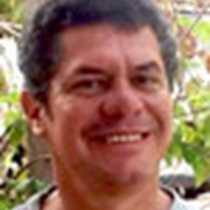We woke up today anchored on the northeastern side of the oldest island of Galapagos. The place is called Gardner Bay and has three little islets in front of a gorgeous white sandy beach. White sand is formed out of organic material, so that the older the islands, the more white sand they will have. Hood or Espanola Island is special because it faces the currents coming from the mainland and this situation makes it the most genetically isolated island in the archipelago. Genetic isolation favors speciation, so much so that Hood has about ninety percent rate of endemism, that is to say nine out of every ten species you see here are endemic or unique to Galapagos. The normal rate of endemism on the planet is about five percent.
After sorting our snorkeling gear we visited Gardner beach where we spotted California Sea Lions along with Hood mockingbirds, Galapagos doves, large cacti, small ground and Warbler finches. The water was clear and after a while we went snorkeling to interact with sea lions in their element. This charmed our guests and young sea lions as well.
In the afternoon we visited the northwestern side of the island, a magical place named Punta Suarez, which is famous for being the only site where Waved albatrosses nest. There are about five couples who nest in La Isla De La Plata of the coast of mainland Ecuador, but out of twelve thousand pairs only one can say they are endemic to this island. Hood Island is magical indeed.







